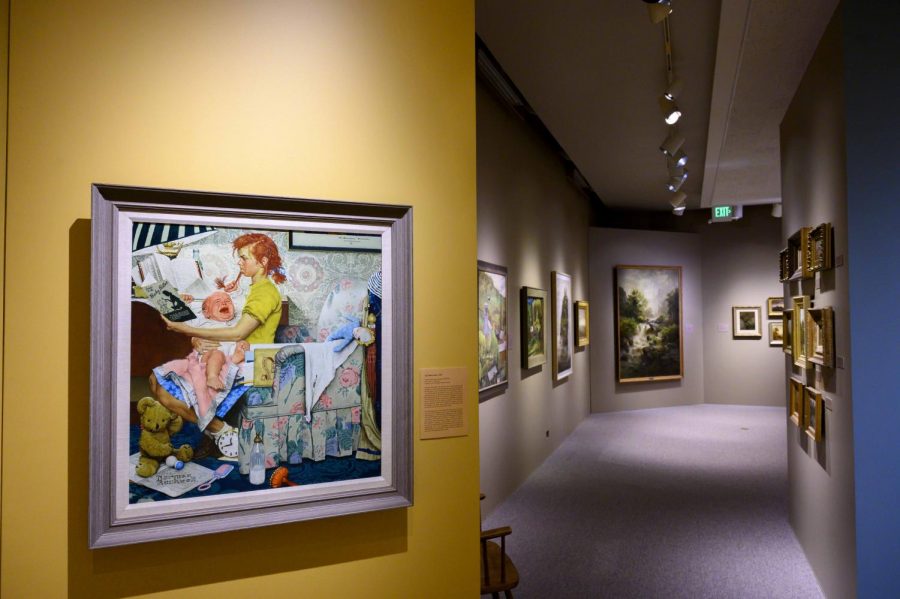Famous works of art hidden in Fleming
November 16, 2019
Proudly facing Colchester Avenue with its rows of arched windows, columns and brick facade, Fleming Museum welcomes visitors to view an eclectic and prolific collection of art and artifacts.
First opened in 1931, Fleming is home to more than 24,000 objects that span widely across cultures and time periods.
Fleming’s curator, Andrea Rosen, said Fleming’s collection includes the work of well-known Western artists such as Pablo Picasso, Rembrandt and Norman Rockwell as well as a wide variety of anthropological artifacts and costumes.
A 1947 oil painting by Norman Rockwell titled “The Babysitter” hangs on the second floor of Fleming in the museum’s Eurpoean and American Art Galleries.
Rockwell himself gave the painting to Burlington’s Taft School as a memorial for a classmate who passed away.
When the class attempted to buy an illustration from Rockwell, the famed artist returned the money and gave the painting as a gift.
In 1995, the Burlington school district faced financial trouble and they thought about selling the piece.
Members of the class rasied money to keep the piece on long-term loan to Fleming, according to the painting’s plaque.
While the Norman Rockwell is displayed , most work by more famous artists is in storage.
“I think the challenge is communicating what’s in it to the public,” Rosen said. “We can’t communicate to our audiences as well as we’d like the very diverse offerings that we have.”
Pieces by more famous artists are often not up on Fleming’s walls.
The pieces done by famous artists in Fleming’s collection are often prints, like the Picasso and Rembrandt, or photographs.
“Works on paper are light sensitive, so if you put them out for a long time, they’re going to fade,” Rosen said.
However, last semester, a museum studies class taught by Kelley Helmstutler Di Dio, professor of art history, co-curated a show with Fleming that drew on works from Fleming’s collection, including works by Fransico Goya, Kara Walker, Pablo Picasso and the Guerrilla Girls.
The exhibit is titled “Resist! Persist! Insist!” and is focused on the intersection of art and activism.
According to Fleming’s website, the exhibition explores themes of racial violence, state oppression, gender in the art world and more.
“As citizens of this messy world, we have a duty to address our past, ugly as it might be,” the student curators wrote.
Maud Mayer ‘19 is one of the students who worked on the exhibit and said that she was surprised to learn about the Fleming’s varied collection.
“It was shocking to learn that there are so many well-known and universally renowned artists within Fleming’s collection,” Mayer said. “Most of my classmates, including myself, had no idea that the Fleming held such a vast array of works from pivotal artists.”
While most works by famous artists are usually left in storage in order to protect them, “Resist! Insist! Persist!” provided an opportunity for some of these works to be seen by the public.
Picasso’s “Life of Franco I” had not hung on Fleming’s walls for many years before this exhibit. The print is a satire of the Spanish Revolution.
“By exposing classic and contemporary works which were originally under wraps to the public, we were able to initiate a larger conversation about where art and art history stand in the conversation of protest,” Mayer said.

















